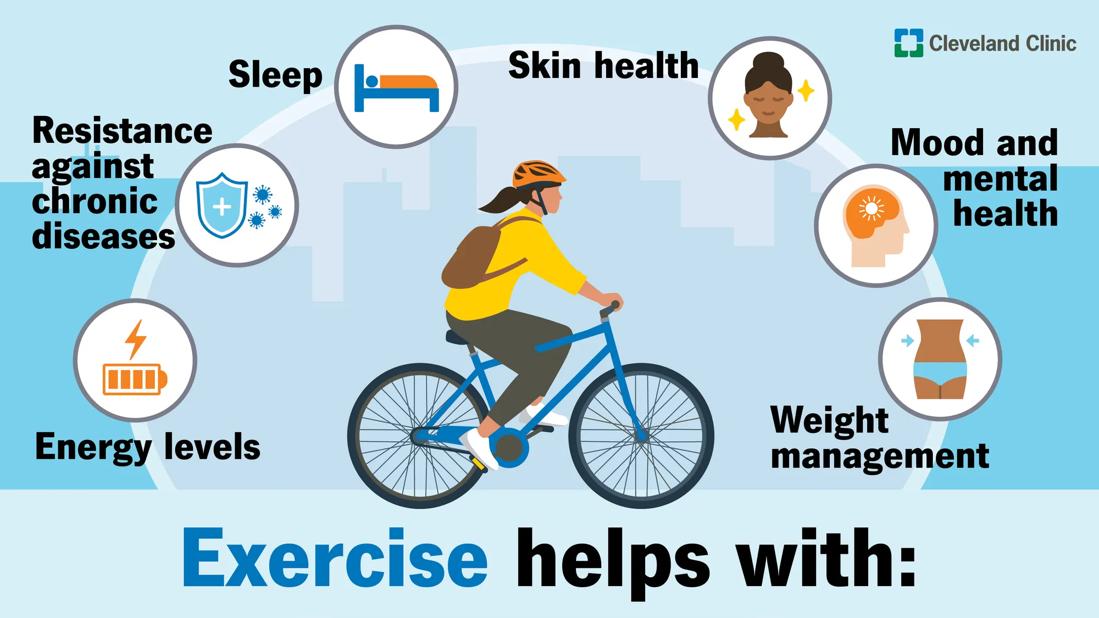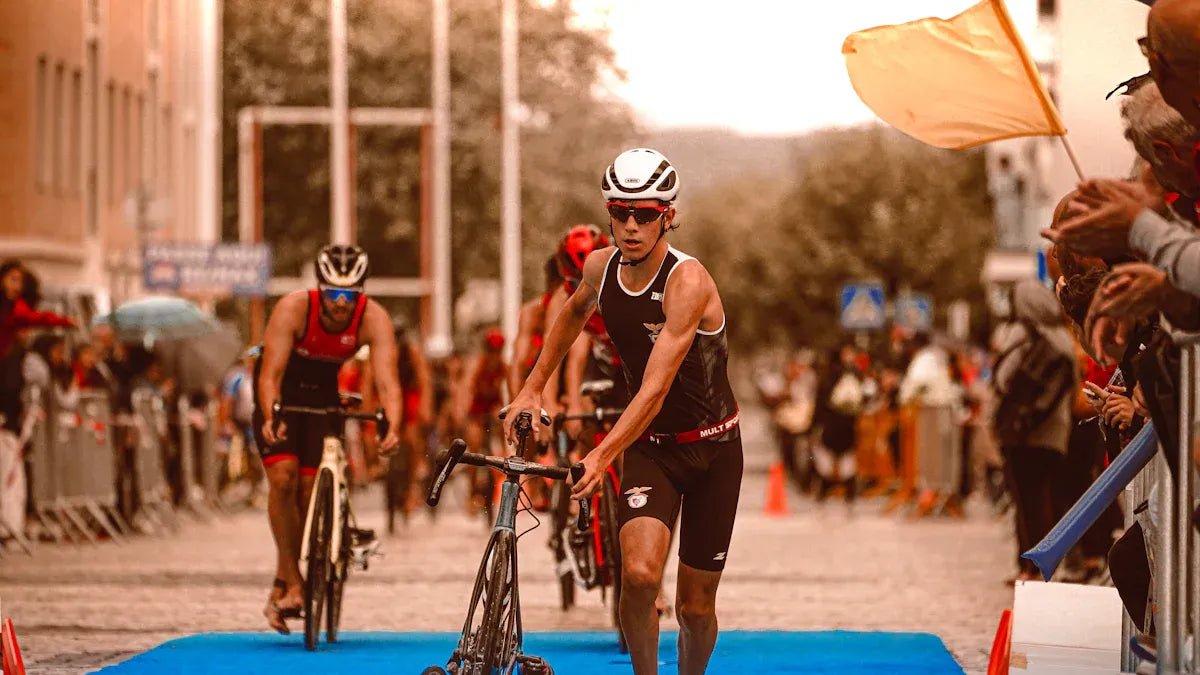Are you trying to lose weight and wondering whether running or cycling will get you there faster? You’ve probably heard both can burn calories, but which one is truly better for shedding pounds?
This question matters because your time and effort should bring the best results. You’ll discover the real differences between running and cycling for weight loss. By the end, you’ll know exactly which workout suits your body and goals. Keep reading to find out how to make your exercise work harder for you.

Calories Burned Comparison
Running and cycling are popular exercises for weight loss. Both help burn calories and improve fitness. Knowing how many calories each burns can guide your choice.
This article compares calorie burn rates for running and cycling. It also looks at factors that change calorie burn during these activities.
Running Calorie Burn Rates
Running burns many calories in a short time. The faster you run, the more calories you burn. On average, running burns about 100 calories per mile.
Running at a pace of 6 miles per hour burns more calories than jogging slowly. Your weight also changes how many calories you burn.
- Running 5 mph burns 480-600 calories per hour
- Running 7.5 mph burns 600-900 calories per hour
- Heavier people burn more calories running
Cycling Calorie Burn Rates
Cycling is a low-impact exercise that also burns calories. The speed and resistance affect how many calories you burn. Moderate cycling burns fewer calories than fast cycling.
On average, cycling burns about 400-700 calories per hour. This depends on effort and terrain.
- Leisure cycling burns around 400 calories per hour
- Moderate cycling burns about 500-600 calories per hour
- Vigorous cycling can burn 700 or more calories per hour
Factors Affecting Calorie Burn
Calorie burn varies by many factors. Body weight, speed, and workout duration matter most. Fitness level and metabolism also affect calories burned.
Terrain and equipment influence cycling calorie burn. Running uphill burns more calories than running on flat ground. Using a heavier bike requires more effort.
- Heavier people burn more calories during exercise
- Faster speed increases calorie burn
- Longer exercise sessions burn more total calories
- Hills and rough terrain increase calorie burn
- Fitness level changes efficiency and calorie use

Impact On Muscle And Metabolism
Running and cycling are popular exercises for weight loss. Both affect muscles and metabolism in different ways.
Understanding muscle use and metabolic effects helps choose the best workout for your goals.
Muscle Engagement In Running
Running uses many muscles in your legs and core. It mainly works your calves, quads, hamstrings, and glutes.
This exercise also activates your core and upper body muscles for balance and posture.
- Calves help push off the ground
- Quads and hamstrings move your legs forward and backward
- Glutes stabilize hips and generate power
- Core muscles keep your body steady
Muscle Engagement In Cycling
Cycling mainly targets your lower body muscles. It focuses on quads, hamstrings, glutes, and calves.
Your core helps with balance, but the upper body works less during cycling.
- Quads push the pedals down
- Hamstrings pull the pedals up
- Glutes provide power for pedaling
- Calves assist in pedal movement
Effects On Metabolic Rate
Running raises your metabolic rate more than cycling. It burns more calories per minute.
Running also increases your metabolism after exercise, which helps with fat loss.
- Running boosts metabolism during and after exercise
- Cycling burns calories but less after exercise
- Higher intensity running improves fat loss
- Both exercises improve overall metabolism with regular practice
Joint Health And Injury Risks
Running and cycling are popular exercises for weight loss. Both affect your joints differently. Understanding joint health and injury risks helps you choose the best workout.
Joint health is important for long-term fitness. Injuries can slow your progress and cause pain. Let’s look at running and cycling from this view.
Running And Joint Stress
Running puts a lot of pressure on your joints. Your knees, hips, and ankles absorb the impact with each step. This can cause joint wear over time.
People with weak joints or arthritis may find running painful. Hard surfaces increase joint stress. Proper shoes and running form can reduce some stress.
- High impact on knees and ankles
- Risk of joint wear if overdone
- Hard surfaces increase joint stress
- Good shoes can help absorb shock
Cycling’s Low-impact Benefits
Cycling is a low-impact exercise. It puts less stress on your joints than running. Your body weight is supported by the bike.
This makes cycling ideal for people with joint pain or injuries. It strengthens muscles around joints without high impact. This can improve joint health.
- Low impact on knees and hips
- Supports body weight during exercise
- Good for joint pain and arthritis
- Builds muscle around joints
Common Injuries And Prevention
Both running and cycling can cause injuries. Overuse and poor technique are common causes. Knowing injury types helps with prevention.
In running, knee pain and shin splints are common. Cycling injuries often include knee pain and lower back strain. Stretching and proper gear reduce risks.
- Running Injuries:Knee pain, shin splints, stress fractures
- Cycling Injuries:Knee pain, lower back strain, saddle sores
- Wear proper shoes and bike fit
- Warm up and stretch before exercise
- Increase workout intensity gradually
Sustainability And Enjoyment
Choosing between running and cycling for weight loss depends on how much you enjoy the activity. Enjoyment helps you keep going over time. Sustainability means doing the exercise regularly without quitting.
Both running and cycling burn calories, but the best choice is the one you like and can stick with. Let’s look at what affects motivation, enjoyment, and long-term exercise habits.
Motivation And Consistency
Motivation is key to staying consistent with exercise. If you feel bored or tired quickly, you may stop.
Running can be simple and easy to start. Cycling may need a bike and some skill. But cycling is low impact and easier on joints.
- Running burns more calories in less time
- Cycling is gentler on knees and hips
- Choose what fits your daily routine
- Set small goals to keep motivated
Enjoyment Factors
Enjoyment comes from how fun and comfortable an exercise feels. Some like running outdoors in fresh air. Others prefer cycling to explore new places.
Running can feel intense but freeing. Cycling lets you go farther with less effort. Your personal taste matters most.
- Running is easy to do anywhere
- Cycling allows longer rides with less strain
- Music or podcasts can boost enjoyment
- Group activities make both fun
Long-term Exercise Adherence
Long-term exercise means doing it regularly for months or years. This helps with lasting weight loss and health.
Cycling’s lower impact can reduce injury risk. Running builds strong bones but may cause joint pain if overdone. Pick what you can enjoy without pain.
- Listen to your body to avoid injuries
- Mix running and cycling to stay fresh
- Find a routine that fits your lifestyle
- Celebrate small progress to keep going
Practical Considerations
Choosing between running and cycling for weight loss depends on many practical factors. These include how easy it is to start, how much time you have, and where you live.
Understanding these factors can help you pick the best activity for your lifestyle and goals.
Accessibility And Equipment
Running requires very little equipment. A good pair of running shoes is enough to start. You can run almost anywhere like parks, sidewalks, or tracks.
Cycling needs a bike, helmet, and sometimes extra gear. This can be costly. You also need safe roads or trails to ride on. Access to bike lanes or trails affects how often you can cycle.
- Running needs minimal gear and space
- Cycling requires a bike and safety equipment
- Safe routes are important for both activities
Time Efficiency
Running usually burns more calories per minute than cycling. This means you may spend less time running to lose weight.
Cycling can be easier on your joints and may allow longer workouts. You can cycle at a steady pace for more time if you want.
- Running offers high calorie burn in less time
- Cycling allows longer exercise with less joint stress
- Choose based on how much time you can dedicate
Weather And Environment
Running can be done indoors on a treadmill, which helps during bad weather. Outdoor running may be tough in rain or snow.
Cycling outdoors depends heavily on weather. Rain or strong wind can make cycling hard or unsafe. Indoor cycling with a stationary bike is an option but needs equipment.
- Running can be done indoors or outdoors
- Cycling outdoors depends on weather conditions
- Indoor cycling needs special equipment
Combining Running And Cycling
Running and cycling are two popular ways to lose weight. Both help burn calories and improve fitness. Using both activities together can make weight loss easier and more fun.
Combining running and cycling lets your body rest from one exercise while working with the other. This balance lowers injury risk and keeps your workouts fresh.
Cross-training Benefits
Cross-training means doing different exercises in one routine. Running and cycling together help by using different muscles. This stops overuse injuries and boosts overall strength.
Mixing exercises keeps your body guessing. This can help you avoid weight loss plateaus. Also, cross-training improves your heart and lung health better than one exercise alone.
- Reduces risk of injuries
- Works different muscle groups
- Prevents workout boredom
- Improves endurance and strength
- Helps burn more calories overall
Sample Workout Plans
Try different workout plans to combine running and cycling. You can alternate days or combine both in one session. Adjust plans based on your fitness level and goals.
- Plan 1:Run 3 days, cycle 2 days per week
- Plan 2:Cycle 30 minutes, then run 20 minutes, 3 times a week
- Plan 3:Long cycle ride on weekends, short runs on weekdays
- Plan 4:Easy cycling warm-up before a run, twice a week
Start slow and increase time or distance weekly. Rest days are important to let your body recover.
Maximizing Weight Loss Results
To lose weight fast, focus on consistency and intensity. Mix high-intensity running and cycling with steady, longer sessions. This combination burns more calories and fat.
Watch your diet and stay hydrated. Recovery and sleep also help your body burn fat. Track your progress to stay motivated and make changes if needed.
- Include intervals in running and cycling workouts
- Use longer, steady rides or runs for endurance
- Fuel your body with healthy foods
- Get enough rest and sleep
- Track workouts and weight loss progress

Frequently Asked Questions
Is Running More Effective Than Cycling For Weight Loss?
Running generally burns more calories per minute than cycling. It increases heart rate quickly and improves metabolism. However, cycling can be sustained longer, aiding consistent calorie burn. Both exercises effectively promote weight loss when done regularly with a healthy diet.
How Does Calorie Burn Compare Between Running And Cycling?
Running burns about 50% more calories per hour than moderate cycling. Intensity and duration affect total calories burned in both activities. Higher intensity cycling can match running’s calorie burn. Your weight and workout effort also influence calorie expenditure significantly.
Can Cycling Help Build Muscle While Losing Weight?
Yes, cycling builds leg muscles and tones the lower body. It also improves cardiovascular fitness and endurance. Unlike running, cycling is low-impact, reducing joint stress. This makes it a good option for muscle preservation during weight loss.
Which Exercise Is Better For Joint Health: Running Or Cycling?
Cycling is gentler on joints due to its low-impact nature. Running exerts more pressure, which may cause joint pain or injury. For people with joint issues, cycling is often recommended. Both exercises require proper form to avoid injuries.
Conclusion
Deciding between running and cycling depends on personal goals. Both can help with weight loss. Running burns more calories in less time. But cycling is easier on the joints. Consistency is key for weight loss success. Choose what you enjoy more.
This ensures you stick with it. Listen to your body and mix both for balance. Enjoy the journey to a healthier you. Remember, the best exercise is the one you love doing.



